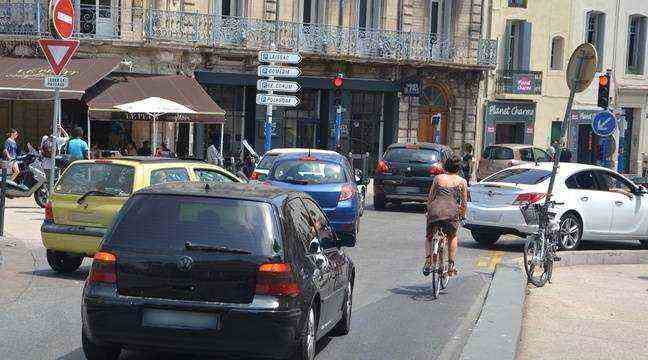For polluting drivers, driving in Montpellier (Hérault) will be more and more complicated in the coming years. The Low Emission Zone (ZFE) will introduce progressive traffic restrictions, under penalty of a fine of 68 to 135 euros. Until the diesel ban in 2028. 20 minutes explains to you.
What is the ZFE?
The low emission zone (ZFE) is a perimeter in which the circulation of the most polluting vehicles will be progressively prohibited, 24 hours a day and 7 days a week, to limit pollution. This national system, established in 2019 after a call to order from the European Union, targets, first of all, the metropolises. In Montpellier, the community opted for a deployment in two phases, to allow the inhabitants to organize themselves.
During the first phase, on July 1, the ZFE will concern Montpellier, Grabels, Juvignac, Saint-Jean-de-Védas, Lattes, Villeneuve-lès-Maguelone, Pérols, Castelnau-le-Lez, Crès, Jacou and Clapiers. It will be extended to all municipalities on July 1, 2026. A date on which tram line 5 and the tram bus will be launched. And where transport will be free. Because the idea is that the inhabitants who take their car to go to work invest in clean vehicles but also that they opt “for a modal shift towards carbon-free mobility”, the bus, the tramway or the bicycle, notes Julie Frêche (PS), vice-president of the metropolis in charge of transport.
Who will be affected?
Individuals and professionals must comply with the ZFE, according to the Crit’Air sticker (unclassified, 5, 4, 3, 2, 1 or green, to be requested here) assigned to their vehicle. All are concerned: cars, two-wheelers, utilities, buses and trucks. Fasten your seat belts, it’s not that simple. For individuals driving by car, only non-classified vehicles (the most polluting) will be excluded from the ZFE in July. Then 5 vignettes in 2023, 4 in 2024, 3 in 2025. Finally, in 2028, only cars with a Crit’Air 1 (rechargeable hybrid vehicles) or green (electric) will be admitted.
For individuals and professionals who drive with two-wheelers, non-classified vehicles will be prohibited from July 1. Then vignettes 4 in 2024, 3 in 2025 and 2 in 2028. For light commercial vehicles, non-classified and vignettes 5 will no longer be able to drive in the ZFE from July 1. Then the 4 in 2023, the 3 in 2024 and the 2 in 2028. Finally, for trucks, the non-classified and the 5 will be banned from the ZFE from July 1st. Then the 4 in 2023, the 3 in 2024 and the 2 in 2025.
Are there any exemptions?
Yes. First, certain axes will not be affected by these measures, in particular the N109, M986 in Lattes, D66 in Pérols, M67 in Teyran, M65 in Crès, M5 in Lavérune or the avenues Auriol, des Moulins and Neruda. In addition, the law excludes motorways from the system. An exception which infuriates the mayor, Michaël Delafosse (PS), who wants the State to reconsider this decision. “It’s a real problem,” laments the elected official, who points to the pollution of these sectors. “That’s why we haven’t built housing in Cambacérès”, the new district on the edge of the A9 and the A709.
Access to park and ride facilities and business parks is also exempt. Finally, some drivers may request exemptions. In particular the “small riders”, who travel less than 8,000 km per year. “During the consultations, I heard some people say: ‘I have my old Twingo from 1995, and I’m taking my son to basketball on Wednesday afternoons, how am I going to do it?'” confides Julie Frêche. It’s not our target. For “small riders”, it will be possible to continue to circulate in the ZFE, although the Crit’Air sticker is excluded. This will also be the case for professionals with specific vehicles, of which there is no ecological model.

